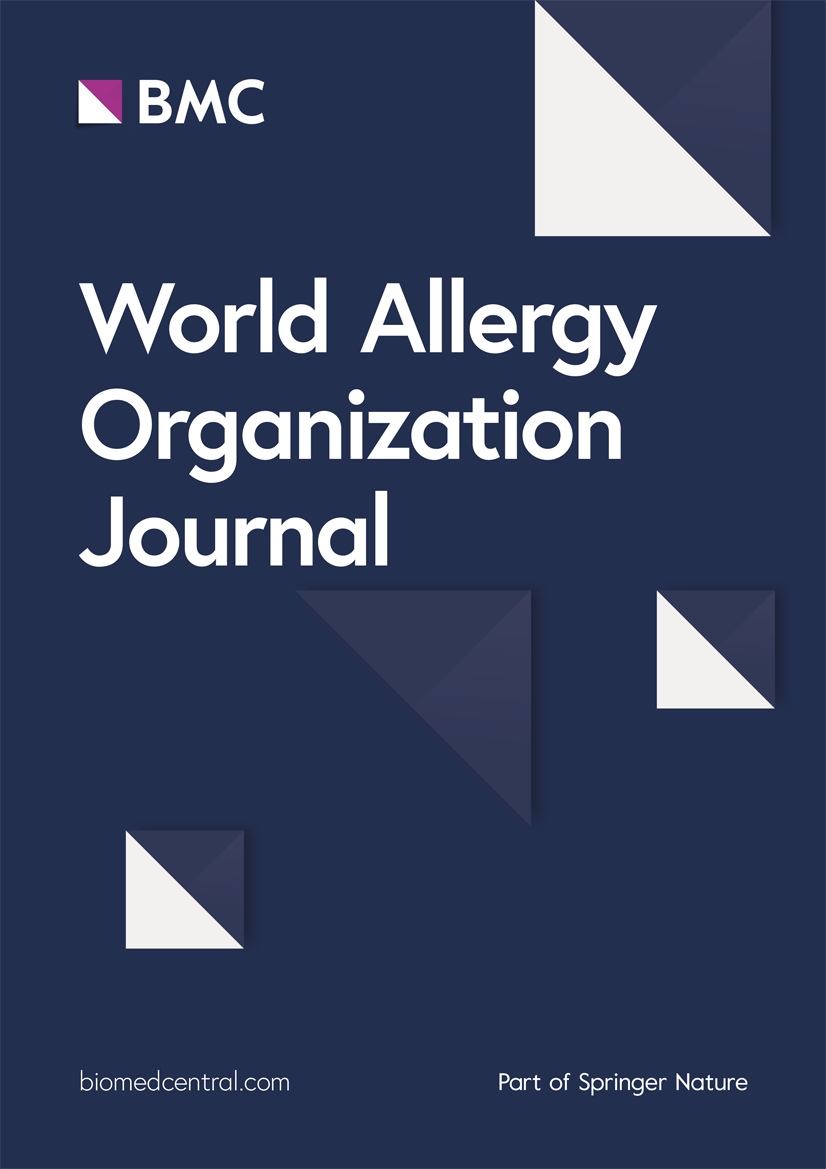凝胶相互作用组分析鉴定了3个新的螨变应原derf42、derf43和derf44
IF 4.3
2区 医学
Q2 ALLERGY
引用次数: 0
摘要
室内尘螨(HDMs)产生主要的吸入过敏原,在世界范围内引发过敏性疾病。所有HDM致敏成分的特性尚不清楚。我们的目的是建立一种新的凝胶相互作用分析(GIA)方法来发现和鉴定新的过敏原。方法采用凝胶亲和树脂和LC-MS/MS(液相色谱-串联质谱联用)技术对粉棘棘提取物中凝胶结合蛋白(GBPs)进行分析。由编码候选过敏原的cdna产生的重组蛋白在原核系统中表达。采用ELISA(酶联免疫吸附试验)、western blotting和dot-blotting检测IgE结合情况。结果共检测了14个GBPs,其中已知过敏原10个,候选过敏原4个。三个候选结合重组凝胶,被WHO/IUIS过敏原命名小组委员会命名为Der f42、Der f43和Der f44。结果显示,Der f42、Der f43和Der f44的ige结合率分别为7.2%(9/125)、8.5%(12/143)和6.7%(6/90)。结论gia在本研究中发现了3个新的HDM蛋白,为发现和研究过敏原提供了新的策略。本文章由计算机程序翻译,如有差异,请以英文原文为准。
Identification of three novel mite allergens, Der f 42, Der f 43, and Der f 44, from Dermatophagoides farinae by gelsolin interactome analysis
Background
House dust mites (HDMs) produce major inhaled allergens that trigger allergic diseases worldwide. The identities of the full spectrum of HDM allergenic components are not yet known. We aimed to develop a new gelsolin interactome-analysis (GIA) method for discovering and identifying novel allergens.
Methods
Gelsolin-binding proteins (GBPs) in Dermatophagoides farinae extracts were analyzed with gelsolin-affinity resin and LC-MS/MS (liquid chromatography coupled to tandem mass spectrometry) analyses. Recombinant proteins generated from cDNAs encoding candidate allergens were expressed in a prokaryotic system. IgE binding was evaluated by ELISA (enzyme-linked immunosorbent assay), western blotting, and dot-blotting.
Results
A total of 14 GBPs were assayed, including 10 known allergens and 4 candidates. Three candidates bound recombinant gelsolin, and they were named Der f 42, Der f 43, and Der f 44 by the WHO/IUIS Allergen Nomenclature Sub-committee. IgE-binding assays showed that Der f 42, Der f 43, and Der f 44 had IgE-binding rates of 7.2% (9/125), 8.5% (12/143), and 6.7% (6/90), respectively.
Conclusion
GIA revealed 3 novel HDM proteins in this study and represents a new strategy for discovering and studying allergens.
求助全文
通过发布文献求助,成功后即可免费获取论文全文。
去求助
来源期刊

World Allergy Organization Journal
Immunology and Microbiology-Immunology
CiteScore
9.10
自引率
5.90%
发文量
91
审稿时长
9 weeks
期刊介绍:
The official pubication of the World Allergy Organization, the World Allergy Organization Journal (WAOjournal) publishes original mechanistic, translational, and clinical research on the topics of allergy, asthma, anaphylaxis, and clincial immunology, as well as reviews, guidelines, and position papers that contribute to the improvement of patient care. WAOjournal publishes research on the growth of allergy prevalence within the scope of single countries, country comparisons, and practical global issues and regulations, or threats to the allergy specialty. The Journal invites the submissions of all authors interested in publishing on current global problems in allergy, asthma, anaphylaxis, and immunology. Of particular interest are the immunological consequences of climate change and the subsequent systematic transformations in food habits and their consequences for the allergy/immunology discipline.
 求助内容:
求助内容: 应助结果提醒方式:
应助结果提醒方式:


